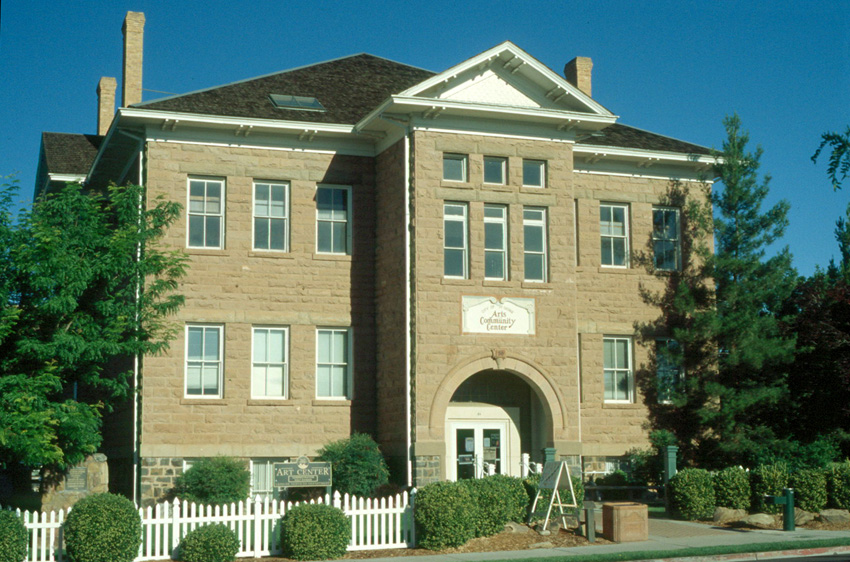
|
|
|
|
When a building consists of two distinct types of stone, it's usually putting on airs a bit, with one or both types shipped in from afar. This handsome building, however, consist of two very different kinds of stone available within a few city blocks.
We're looking at the Dixie Academy building in the town of St. George in southwestern Utah (which is "Dixie" if you're in Utah). The building was constructed in 1910 and 1911, and a plaque in the arch reports that the "arch and table stone [were] designed and executed by George Brooks 1845-1930". Mr. Brooks was a resident of St. George who working on many local projects as a stone mason. This building housed a combination of high school and college that went on to be Dixie Junior College and is presently the Dixie State College of Utah, which of course now has a much larger home. This building has gone on to house St. George's community Arts Center, but it's still known as the Dixie Academy.
The Dixie Academy building consists of two distinct kinds of stone. Up to about five feet above ground level, the walls are basalt. This very hard stone has been hammered to give sharp-cornered blocks, at least at the front of the building as seen below. Above that dark gray base, most of the building's walls consist of a reddish-brown sandstone, as seen in the second image below.
|
|
|
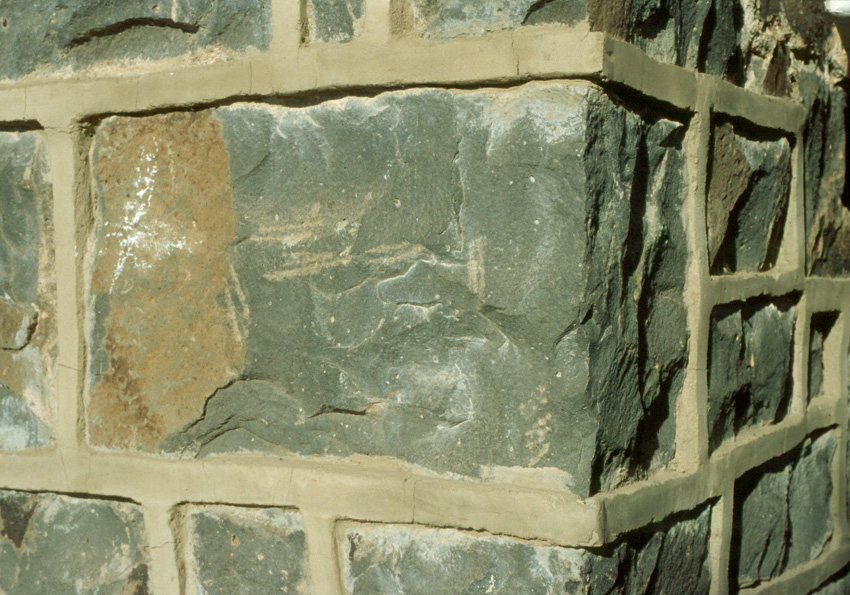
|
|
|
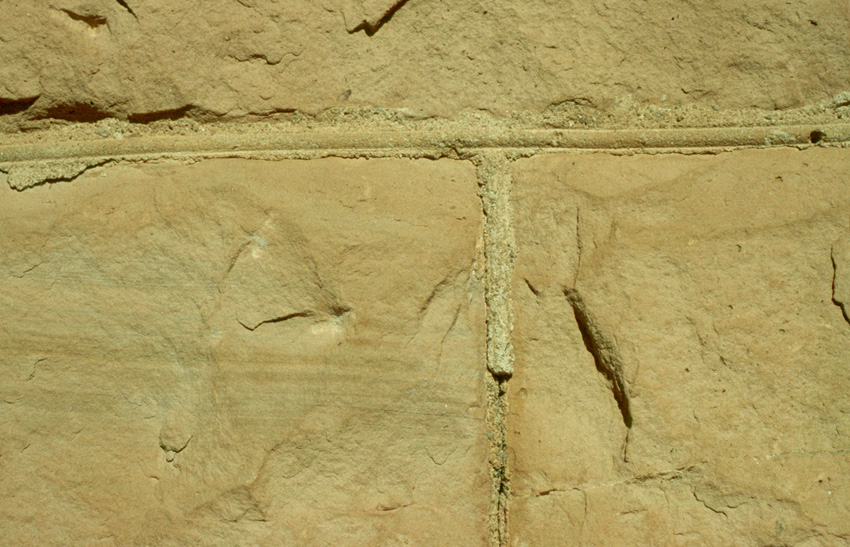
|
|
|
|
Anyone who has been to St. George will appreciate where the red sandstone came from. St. George is nestled between ridges of red Mesozoic sandstone, and it's a good base for trips out into southern Utah's famous "red rock" country. For example, this evening view from St. George's mesa-top airport shows the glorious red sandstone country to the east.
|
|
|
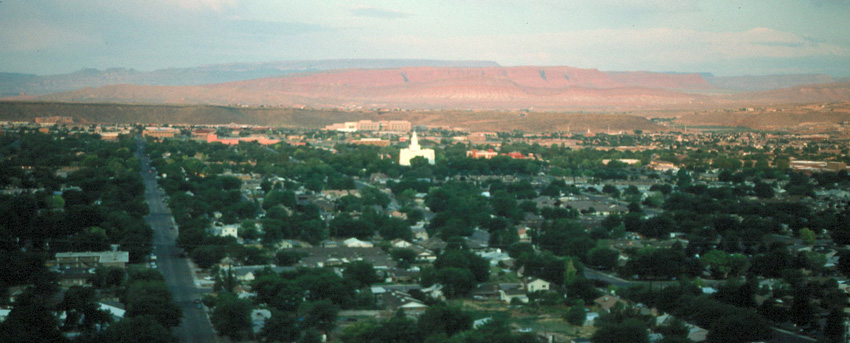
|
|
|
|
With that said, anyone who has been to St. George and has noticed the geology will have seen that much of the landscape is capped with a thin layer of basalt. For example, the view below from along Airport Road shows that capping layer of basalt lying on recent gravels, which in turn lie on tilted layers of red sandstone and shale. Dixie Academy just reversed the vertical relationship.
|
|
|
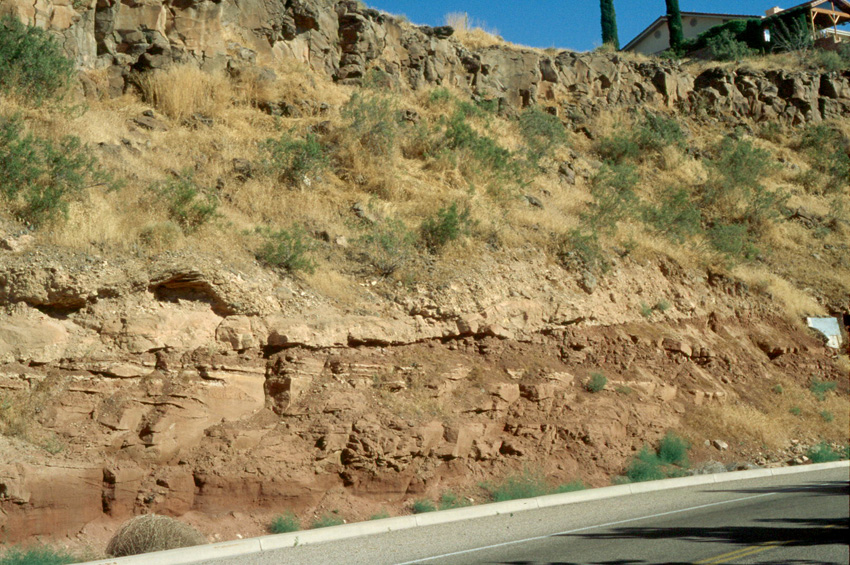
|
|
|
|
The image below shows more of the same: the location of the image above is toward the lower right, and the basalt-over-red-sandstone theme is repeated at the skyline at left.
|
|
|
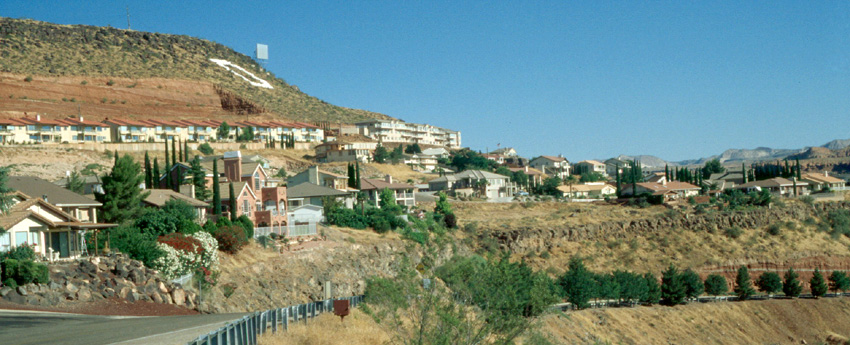
|
|
|
|
As we mentioned above, the Dixie Academy was built in 1910. In 2005, when these pictures were taken, an addition was being built on to the back. To its credit, the addition maintains the sandstone theme of most of the building. However, as the image below shows, the addition contains none of the basalt in the basal walls of the original building. Modern builders will, when pressed, still put a veneer of sandstone on their concrete-block structures, but they won't work with a stone as hard as basalt. Only the stonemasons of days gone by were willing to put in the work to produce a building like the original Dixie Academy with its hewn blocks of both sandstone and basalt.
|
|
|
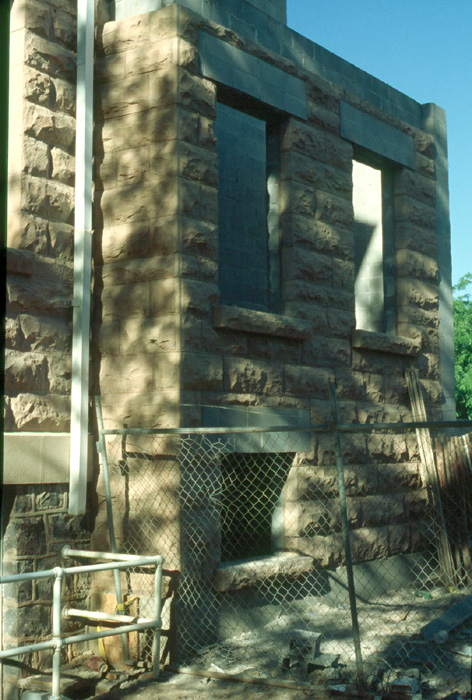
|






